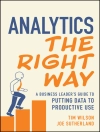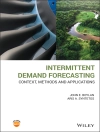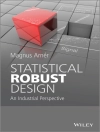Praise for Handbook of Exchange Rates
‘This book is remarkable. I expect it to become the
anchor reference for people working in the foreign exchange
field.’
–Richard K. Lyons, Dean and Professor of Finance,
Haas School of Business, University of California
Berkeley
‘It is quite easily the most wide ranging treaty of
expertise on the forex market I have ever come across. I will be
keeping a copy close to my fingertips.’
–Jim O’Neill, Chairman, Goldman Sachs Asset
Management
How should we evaluate the forecasting power of models? What are
appropriate loss functions for major market participants? Is the
exchange rate the only means of adjustment? Handbook of Exchange
Rates answers these questions and many more, equipping readers
with the relevant concepts and policies for working in
today’s international economic climate.
Featuring contributions written by leading specialists from the
global financial arena, this handbook provides a collection of
original ideas on foreign exchange (FX) rates in four succinct
sections:
* Overview introduces the history of the FX market
and exchange rate regimes, discussing key instruments in the
trading environment as well as macro and micro approaches to FX
determination.
* Exchange Rate Models and Methods focuses on
forecasting exchange rates, featuring methodological contributions
on the statistical methods for evaluating forecast performance,
parity relationships, fair value models, and flow-based
models.
* FX Markets and Products outlines active currency
management, currency hedging, hedge accounting; high frequency and
algorithmic trading in FX; and FX strategy-based products.
* FX Markets and Policy explores the current
policies in place in global markets and presents a framework for
analyzing financial crises.
Throughout the book, topics are explored in-depth alongside
their founding principles. Each chapter uses real-world examples
from the financial industry and concludes with a summary that
outlines key points and concepts.
Handbook of Exchange Rates is an essential reference for
fund managers and investors as well as practitioners and
researchers working in finance, banking, business, and
econometrics. The book also serves as a valuable supplement for
courses on economics, business, and international finance at the
upper-undergraduate and graduate levels.
İçerik tablosu
Part I. Overview
1. Foreign Exchange Market Structure, Players and Evolution 1
2. Macro Approaches to Foreign Exchange Determination 49
3. Micro Approaches to Foreign Exchange Determination 79
4. The Exchange Rate in a Behavioural Finance Framework 119
5. The Evolution of Exchange Rate Regimes and Some Future Perspective 145
Part II. Exchange Rate Models and Methods
6. Purchasing Power Parity in Economic History 175
7. Purchasing Power Parity in Tradable Goods 203
8. Statistical and Economic Methods for Evaluating Exchange Rate Predictability 239
9. When Are Pooled Panel-Data Regression Forecasts of Exchange Rates More Accurate than the Time-Series Regression Forecasts? 283
10. Carry Trades and Risk 301
11. Currency Fair Value Models 335
12. Technical Analysis in the Foreign Exchange Market 369
13. Modeling Exchange Rates with Incomplete Information 403
14. Exchange Rates in a Stochastic Discount Factor Framework 421
15. Volatility and Correlation Timing in Active Currency Management 453
Part III. FX Markets and Products
16. Is There a Premium for Currency Investing (Beta) 485
17. Is There Skill or Alpha in Currency Investing? 509
18. Currency Hedging for International Bond and Equity Investors 539
19. FX Reserve Management 577
20. High frequency finance: Using scaling laws to build trading models 597
21. Algorithmic Execution in Foreign Exchange 621
22. Foreign Exchange Strategy Based Products 635
23. Foreign exchange futures, forwards and swaps 661
24. Options and Volatility Derivatives 687
Part IV. FX Markets and Policy
25. A Common Framework for Thinking about Currency Crises 741
26. Official Intervention in the Foreign Exchange Market 763
27. Exchange Rate Misalignment – The Case of the Chinese Renminbi 797
Yazar hakkında
JESSICA JAMES, Ph D, is a Managing Director and Co-Head of
the Quantitative Solution Team at Commerzbank in London, where she
is responsible for FX client risk advisory. She has published on
the topics of credit derivatives and total return swaps and is the
coauthor of Interest Rate Modelling (Wiley).
IAN W. MARSH, Ph D, is Professor of Finance in the Cass
Business School at City University London. Dr. Marsh has extensive
consulting experience with companies including JPMorgan Chase,
Morley Fund Managment, and the Royal Bank of Scotland. He currently
focuses his research on credit risk transfer markets and the
foreign exchange market.
LUCIO SARNO, Ph D, is Associate Dean, Head of Faculty, and
Professor of Finance in the Cass Business School at City University
London. Dr. Sarno has extensive industry experience in consulting
and trading foreign exchange for several major asset management
companies and has contributed to policy, training, and research for
the International Monetary Fund, the European Central Bank, and the
World Bank.












